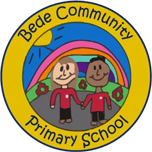Computing
The computing curriculum at Bede Community Primary School is designed with the intent to prepare students for a technology-driven world, focusing on skill development, creativity, and responsible digital citizenship. Its implementation involves a structured, hands-on, and interdisciplinary approach, supported by ongoing teacher training. The curriculum effectively integrates the "Education for a Connected World" framework to cover digital safeguarding, utilizes digital resources from "Project Evolve" to enrich learning experiences, and follows the high-quality scheme of work from "TeachComputing" to ensure comprehensive and well-structured lessons. The curriculum has a significant positive impact on students' skills, academic performance, and future career readiness, while also promoting digital inclusion and social responsibility.
Intent
Educational Foundation:
- Objective: To provide students with a solid foundation in computing principles and digital literacy.
- Rationale: Recognizing the importance of technology in the modern world, the curriculum aims to equip students with the skills needed to navigate and succeed in a technology-driven society.
- Future Readiness: Preparing students for future educational opportunities and careers in STEM fields.
Skill Development:
- Problem-Solving: Enhancing critical thinking and problem-solving skills through coding and computational thinking.
- Creativity: Encouraging creativity through digital content creation, such as graphics, video editing, and multimedia projects.
- Digital Citizenship: Teaching responsible use of technology, including internet safety, privacy, and ethical issues related to digital use, aligned with the "Education for a Connected World" framework.
Inclusivity and Accessibility:
- Ensuring that all students, regardless of background or ability, have access to quality computing education.
- Providing support for students with special educational needs through tailored resources and assistive technologies.
Implementation
Curriculum Design:
- Structured Progression: A well-organized curriculum that builds from basic digital literacy in early years to more complex computing concepts in key stage 2.
- Interdisciplinary Approach: Integrating computing with other subjects, such as math, science, and art, to provide a comprehensive learning experience.
- Framework Integration: Incorporating the "Education for a Connected World" framework to ensure comprehensive coverage of digital safeguarding and responsible online behavior.
Teaching Methods:
- Hands-On Learning: Emphasis on practical activities, such as coding exercises, robotics, and interactive projects.
- Use of Technology: Utilizing various digital tools and platforms, including computers, tablets, and educational software, to facilitate learning.
- Collaborative Projects: Encouraging teamwork through group projects that promote collaboration and communication skills.
- Resource Utilization: Leveraging digital resources from "Project Evolve" to enhance learning experiences with up-to-date, engaging materials.
Teacher Training and Support:
- Providing professional development opportunities for teachers to stay updated with the latest educational technologies and teaching strategies.
- Access to resources and technical support to help teachers effectively deliver the computing curriculum.
- Using the high-quality scheme of work from "TeachComputing" to ensure structured, well-planned lessons that meet educational standards.
Impact
Student Outcomes:
- Enhanced Skills: Improved computational thinking, coding proficiency, and digital literacy among students.
- Academic Performance: Positive impact on overall academic performance through the integration of technology in learning.
- Confidence and Engagement: Increased student confidence and engagement with learning through interactive and hands-on activities.
Long-Term Benefits:
- Career Preparedness: Equipping students with skills that are highly valued in the job market, fostering interest in STEM careers.
- Lifelong Learning: Instilling a mindset of continuous learning and adaptability to new technologies.
Community and Global Impact:
- Digital Inclusion: Contributing to digital inclusion by providing equitable access to computing education.
- Social Responsibility: Encouraging students to use technology responsibly and ethically, promoting positive contributions to the community and society.
